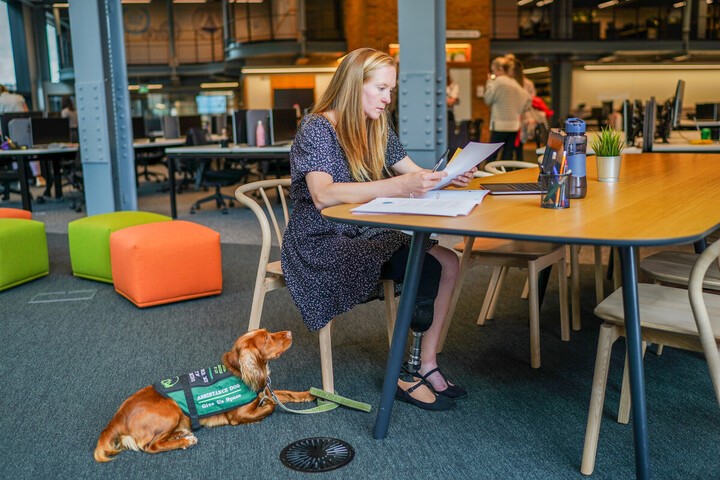Organisations continue to face challenges in achieving diversity and inclusion in their workforce, even when they have good intentions. This can be rooted in the fear of doing the wrong thing, inadequate representation at C-suite level, or a detrimental culture that can be difficult to change.
Change is possible, however, provided that people recognise the barriers that exist. As people professionals, we are well placed to open up that conversation. So where do we start?
Discrimination vs inclusion
There is a difference between overt discrimination, where individuals are denied something, and micro discrimination where you might not be able to put your finger precisely on what the problem is.
With the former, you are excluded because of your differences, whether that’s your age, sex, gender, nationality, ability or skin colour. It can be as a result of implicit or explicit bias.
What I’ve noticed is there is a camaraderie between marginalised people or those who have been discriminated against…people who don’t understand me stay away.
With the latter, it might be more of an underlying current, hidden or subtle, sometimes involving microaggressions.
Perhaps you should have been the front-runner for an opportunity, but you weren’t chosen. Maybe you are not invited to meetings or conversations, or decisions happen without you. It’s easy to develop a subtle paranoia, and think, ‘is it me? Did I say the wrong thing?’
Hidden in plain sight
Have you ever personally experienced discrimination in the workplace? I have. I was a lot bigger than I am now. It wasn’t until I lost ten stone that I realised I had also become more socially acceptable.
More people sit next to me in the waiting room or bus. More people are open to talking to me. I definitely suffered at the hands of BMI bias.
I was also discriminated against when I began gender transition. I co-owned an IT company for 15 years. As I was struggling with my own feelings of being stuck in the wrong body, I became aware of work colleagues talking negatively about a transgender woman working in a shared office block, often describing her as “it” and other dehumanising language.
It made me very apprehensive about sharing how I was feeling with them, but there were lots of subtle cues that they knew and then out of the blue my co-directors offered to buy me out. Once I left I applied for roles and didn’t hide that I was trans.
Inclusion or reluctant tolerance?
Clearly, 2017 is a long time ago in trans awareness and the world has progressed since. I asked one recruiter at the time if my being trans would affect my ability to find work and they said: “If I am really honest, yes it is a problem.” I realised that they were not only worried about putting me forward for a role, but were concerned how it would make them appear to clients.
There is a cognitive and emotional impact on having to try so hard to belong.
What has changed these days is that I am ‘professionally trans’ these days and I am able to use it in my work as someone who is authentic with lived experience.
What I’ve noticed is there is a camaraderie between marginalised people or those who have been discriminated against. You have your own circle around you who share similar lived experiences from different perspectives, if you’re lucky.
People who don’t understand me stay away, which is sad, but also means I have less difficult conversations. I would rather be excluded than tolerated. It is far more honest.
The issue of belonging
Similar to the difference between being lonely and alone, there is a variance between being included and feeling like you belong. I have often felt included but uncomfortable.
Pre-pandemic I used to join others at business conferences and events, but I felt uncomfortable with the ‘bro’ culture. I sometimes have sanctuary in female groups, but sometimes I don’t belong there either.
There is a cognitive and emotional impact on having to try so hard to belong. I am the wrong-shaped peg for many holes, I want to be embraced for who I am, not having to ‘fit in’ with someone else’s expectations.
Equally, my wife of 36 years, Marie, has had many friends walk away from her since I transitioned. Either they couldn’t understand or were confused by the dynamic changes.
Damaging assumptions
Ultimately people who discriminate make assumptions, have preconceived benevolence and typecast who then fall back on stereotypes.
For example, it is often assumed that wheelchair users won’t be able to fulfill a role. We assume it won’t work. Perhaps we think we are doing them a favour by not putting them in an awkward situation.
We have seen positive developments and greater awareness around diversity and inclusion, but now it’s time to go one step further.
For example, how will someone who is a Muslim cope with our social Fridays? That person becomes a risk to the norm rather than an easy hire.
In these scenarios there is an affinity bias – the reality is you are thinking: ‘You are not like me and won’t really fit in’ but you tell yourself you aren’t discriminatory. It’s much more complicated to deal with.
Meanwhile, for the person being excluded, this can trigger feelings of inadequacy, incompetence, stress, imposter syndrome and even unworthiness in the workplace.
Flipping the script
As a hiring manager, you have a choice: You can either passively claim the challenge of finding suitable candidates as being difficult, citing a lack of available talent, or you can proactively create your own talent pipelines.
To achieve this, establish internal educational programmes, and take a proactive approach to enhance your recruitment marketing and employer branding.
Ask introspective questions about why certain candidates aren’t being attracted to your organisation and seek out potential candidates not only at the outset of their careers but also those in the midpoints, or individuals with significant experience to offer later in life.
Prioritise qualities such as emotional intelligence, drive, and adaptability, valuing these traits over purely on-paper qualifications and ‘time served’ experience.
Collaborate with your existing networks and employees to scrutinise job roles and personal requirements to mitigate or minimise the impact of biases and negative signals. Set ambitious targets, collect data, and monitor progress towards your goals.
Use social media and new channels to source talent and attract potential candidates by letting them know they can envision themselves as an integral part of your organisation.
A safe space
In recent years we have seen positive developments and greater awareness around diversity and inclusion, but now it’s time to go one step further.
Marginalised people deserve the feeling of safety that others have – the ability to relax and not worry about wearing a mask or pretending. At work they should have allies and people who support them, and know that the company is behind them and will advocate for them too. How many of you can honestly say that your organisation offers that?
If you enjoyed this, read: Diversity vs Inclusion: Why it matters.
[cm_form form_id=’cm_65a14c3f5da64′]






